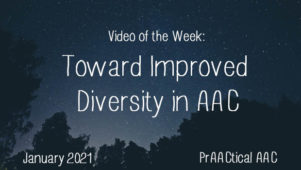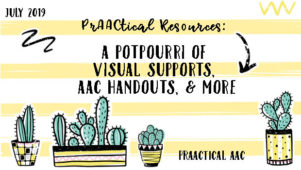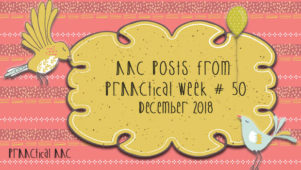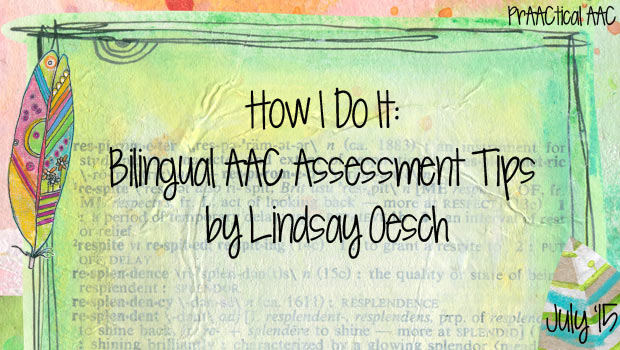Thoughts on Embracing Multilingualism and Diversity in AAC
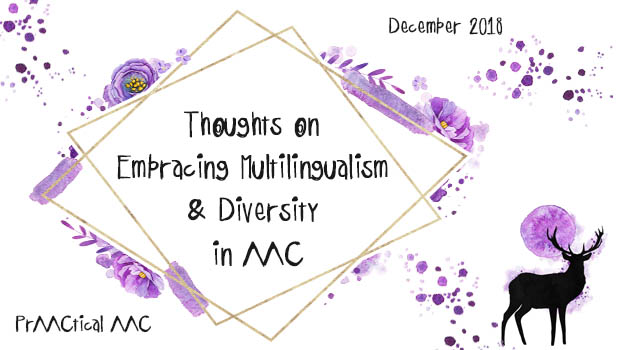
How can we best support learners with complex communication needs who come from a variety of cultural and linguistic backgrounds? Today, we turn the reins over to Arizona-based SLP Deanna Wagner who shares her thoughts on embracing and encouraging multilingualism and diversity in our AAC work.
:::::::::::::::::::::::::::::::::::::::::::::::::::::::::::::::::::::::::::::::::::::::::::::::::::::::::::::::::::::::::::::::::::::::::::::::
My latest article on cultural diversity has just been published in the ASHA Special Issue on Cultural and Linguistic Diversity and AAC, guest edited by Gloria Soto! That means that ASHA members who have a Special Interest Group affiliation can access it and receive CEU credit for studying the content and answering a few questions. Since not all readers are members of an ASHA SIG, I would like to take a moment to share my experiences in preparing the manuscript that I submitted for this article.
Most importantly, as people who serve the needs of those who benefit from AAC, we all need to be aware of our own cultural and linguistic backgrounds. It is helpful to be aware of terms that are used and how it impacts the families we serve. I learned Spanish as a second language. This is referred to as sequential language learning. My first language, English, is called L1 and the second language, Spanish, is called L2. I started learning when I was young but did not have many communication partners or immersive environments in which to practice until I was a teenager.
Doesn’t this sound a little like the language experiences of our AAC users? Many have some exposure to some of the sounds of AAC when they are young, but are not really learning full language structures without an immersive experience with knowledgeable others who are fluent in that language. I loved listening to Maria on Sesame Street, but I didn’t speak with her. In order to really become fluent, I needed to practice and study.
This is the hard part for our AAC users. We are not all in agreement about study methods. It is clear that when partners use an AAC system with people who need AAC, everyone becomes more comfortable including AAC in a variety of contexts. We start to notice and point out the logos and picture menus at restaurants. We remember to point to text and not just the pictures when reading. And by pointing to symbols in a robust AAC system, we help segment the words we are speaking. Carole has had many guest bloggers and provided many references to aided language input and partner augmented communication strategies.
When I first heard Spanish, I was not aware of where words started and ended. It made a huge difference when I started school and could study written words in Spanish. We can provide similar experiences when we read books with our learners who need AAC. This includes learners of all ages. And we don’t need to wait until they are school-aged. We can find stories on YouTube read by fluent speakers of many languages. Bilingualism is not just an expressive skill, it is a continuum of receptive and expressive abilities. And it does not cause language or developmental delays. That is a myth and one of many common misconceptions that are discussed in the ASHA Perspective article. Reading and listening to books in other languages can be lots of fun! Predictability and the repetitive nature of books written for children and early readers can and should be a component of AAC language instruction.
So let’s think about how we can help our learners hear and see words and symbols, letters and sounds. Every experience builds their ability to conceptualize and understand their world. People who are bilingual are constantly thinking about how something may be said in the other language. They recognize when certain vocabulary is practiced during a particular routine in only one language and they don’t know the word in the other language. Sometimes this is referred to as “distributed knowledge.” In AAC we say things like, “He only uses AAC with a specific person” or “He only uses it to say a specific word.” Other negative associations may include things like, “He only echos what others say” or “He perseverates on one thing.” All of these may be influenced by the same thing, what the bilingual and English Language Learning literature refers to as distributed knowledge. It is a limitation in vocabulary. It is not a sign of language disorder, but a natural consequence of multiple language instruction. It is not a problem, but we do need to be aware of how many experiences we provide in order to build language experiences.
We also must remember that using a language expressively means actually saying the words out loud to another person. In addition to exposure to AAC, our students need practice saying the words. This is the same for monolingual and bilingual language learners. So if we expect somebody who uses AAC to express thoughts and ideas in English, they need to practice in English with people who can provide feedback in their use of that language. And the same is true for other languages, from sign language to robust symbol-based AAC systems, to Farsi. I learned some sign language as an adult and even practiced with my sister-in-law. But she moved away and my skills are no longer improving. That does not mean, however, that I have forgotten how signs and facial expressions have meaning, and that the way we combine signs is important. It just means that I am still pretty low on the bilingual continuum when it comes to sign language. To get fluent I would need both study and meaningful practice.
We also need to remember that there is no ceiling on what somebody can learn. Adding another language to the mix does not somehow take away a person’s ability to learn in the first language. We should be aware of our bias in the US towards monolingualism and emphasis on English as the language of instruction. There is no basis in research that supports forced monolingualism, regardless of the level of disability.
Finally, we need to remember that saying something to another person is a choice. What we say is a choice. How we say it is a choice. Young children with limited language start by using body language and gestures. They choose to do this on their own. Somehow when adults do this we judge them and call them less able. This is actually a form of discrimination. The same thing happens when people judge others who do not use English since this is the dominant language of commerce and instruction. Learning another language is an evolution based on experience in routines and environments that embrace that language. It is no wonder that some generations have lost their first language and some people who started using AAC when they were younger stop using it when they get older.
So what can we do to support the people we care about who need AAC? Embrace communication in all its forms. Recognize that mastering language and literacy takes study and practice. Encourage experimentation with words, word order, sounds, and letters. Recognize that when children are exposed to more than one language there will be influences that carry over across systems. Embrace and encourage! Remember that as children learn language they naturally over-generalize until they are given feedback and learning opportunities in real environments that shape what word(s) they will use moving forward. Embrace and encourage! And remember that learning to communicate is a lifelong skill.
We are constantly growing our lexicon and thinking of new ways to share ideas with others. Think about how we use words and language. Be careful not to judge others for the choices they make about how to share their ideas.
Embrace and encourage! Also, please check out a core vocabulary resource that I created, 40 Spanish Words in 4 Months, here (Tip #5).
:::::::::::::::::::::::::::::::::::::::::::::::::::::::::::::::::::::::::::::::::::::::::::::::::::::::::::::::::::::::::::::::::::::::::::::::
Wagner, D. K., (2018, November). Building Augmentative Communication Skills in Homes Where English and Spanish Are Spoken: Perspectives of an Evaluator/Interventionist, Perspectives on AAC, 3, 172-185.
Filed under: Featured Posts, PrAACtical Thinking
Tagged With: bilingual, Deanna Wagner, diversity, multilingual
This post was written by Carole Zangari

